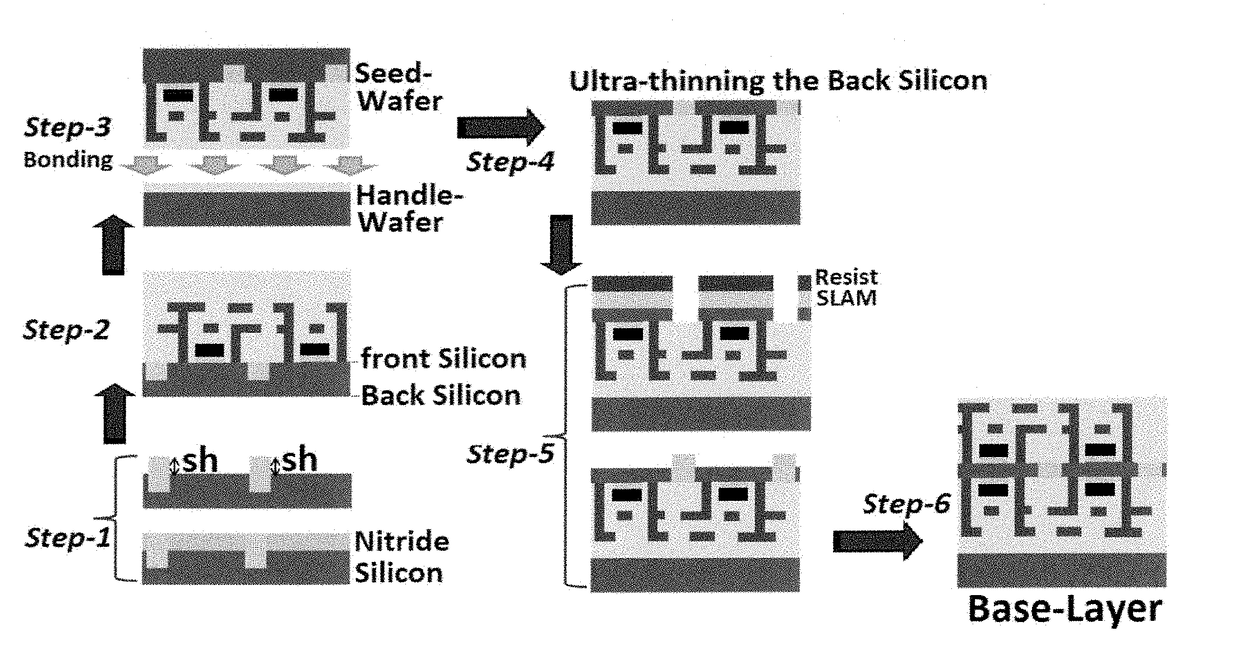Approach to the manufacturing of monolithic 3-dimensional high-rise integrated-circuits with vertically-stacked double-sided fully-depleted silicon-on-insulator transistors
a technology of silicon-on-insulator transistors and integrated circuits, which is applied in the direction of semiconductor devices, electrical apparatus, semiconductor/solid-state device details, etc., can solve the problems that no other existing device technology today can deliver, and the tsvs are required to interconnect transistors, so as to improve the power-efficiency of microprocessors, microcontrollers, and the speed of cpus
- Summary
- Abstract
- Description
- Claims
- Application Information
AI Technical Summary
Benefits of technology
Problems solved by technology
Method used
Image
Examples
Embodiment Construction
[0013]The approach can vertically integrate any number of Silicon layers with any number of high and low Inline interconnect-layers in each Silicon layer. The number of low Inline interconnect-layers in any Silicon layer can be different than the number of its high Inline interconnect-layers. Aside from the shorter top-to-bottom interconnects that this new-approach (of this patent) brings by enabling to directly connect the top Contact(s) of one device to the bottom Contact(s) of another, it has few additional advantages over all prior arts: 1) It allows more ease and flexibility to interconnect the transistors in same Silicon layer (or Silicon plane) by interconnecting these transistors from above and / or from below. This can further reduce the lengths, the RC-delays and the power consumed in interconnecting the devices (transistors) that are laid in same Silicon layer. 2) It enables active 3D-routing of electric signals with purposely switched On / Off devices. This enables reconfigu...
PUM
 Login to View More
Login to View More Abstract
Description
Claims
Application Information
 Login to View More
Login to View More - R&D
- Intellectual Property
- Life Sciences
- Materials
- Tech Scout
- Unparalleled Data Quality
- Higher Quality Content
- 60% Fewer Hallucinations
Browse by: Latest US Patents, China's latest patents, Technical Efficacy Thesaurus, Application Domain, Technology Topic, Popular Technical Reports.
© 2025 PatSnap. All rights reserved.Legal|Privacy policy|Modern Slavery Act Transparency Statement|Sitemap|About US| Contact US: help@patsnap.com



